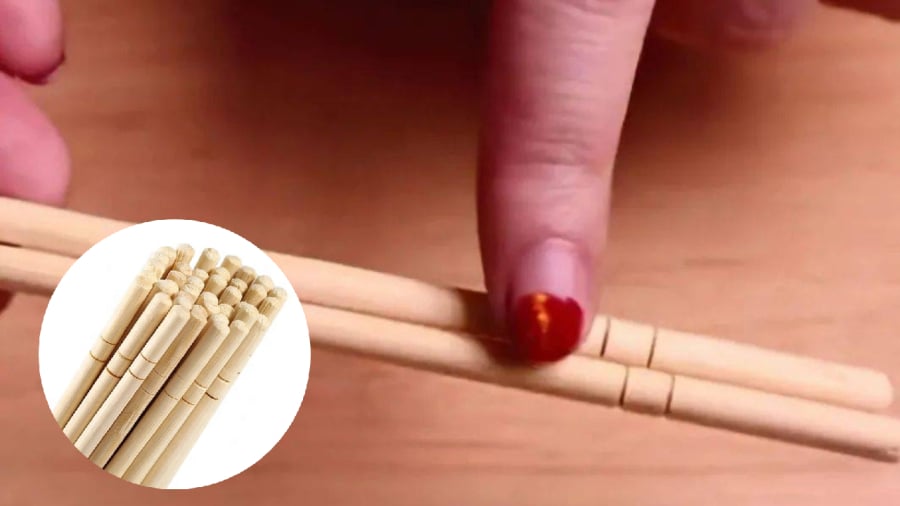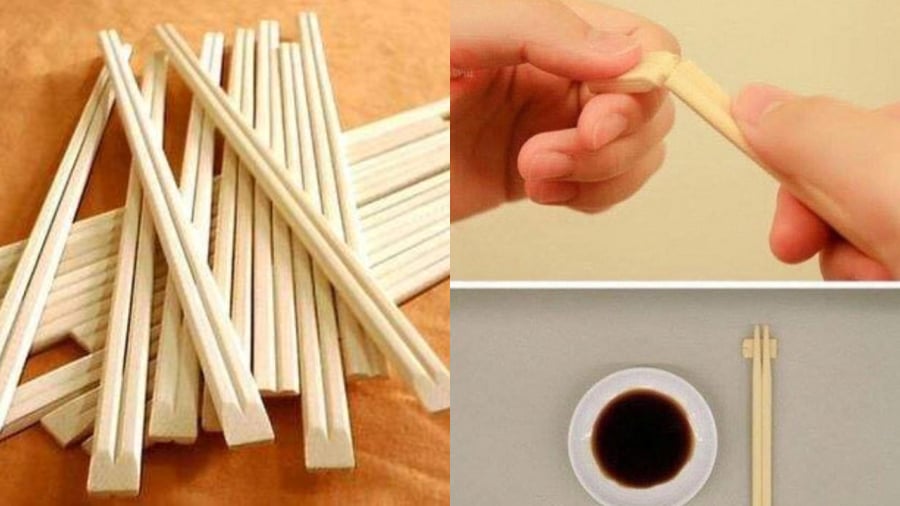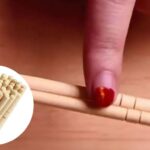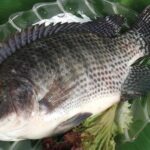There is a common misconception that the number of circles embossed on disposable chopsticks indicates the number of times they have been recycled. For instance, it is believed that chopsticks with two circles have been used once and recycled twice, while those with three circles have been used twice and are on their third cycle of recycling. However, this is not true. The circles on disposable chopsticks have a completely different meaning.
Why do disposable chopsticks usually have circles embossed on them?
If you look closely, you may notice that one end of a disposable chopstick typically has 2-3 embossed circles (though some may not have any). These circles have nothing to do with whether the chopsticks are recycled or not. The notion that the number of circles indicates the number of times the chopsticks have been recycled is baseless.

The circles on disposable chopsticks do not signify the number of times they have been reused.
The primary purpose of these circles is to help users easily identify which end of the chopstick is the top and which is the bottom. Additionally, the circular design element adds a decorative touch, making the chopsticks more aesthetically pleasing.
For some people, the end of the chopstick with the embossed circles serves another purpose. They may snap off this section and use it as a chopstick rest during their meal.

You can break off the end of disposable chopsticks to create a rest for your chopsticks while eating.
Precautions when using disposable chopsticks
Disposable chopsticks are popular due to their affordability and convenience, as they can be discarded after use. When using this type of chopsticks, it is important to carefully examine their shape and quality.
The surface of disposable chopsticks should be smooth and free from any fibers or scratches.
A minimum length of 20 cm is preferable for a more comfortable dining experience.
The color of the chopsticks should be natural, not excessively white, and free from any chemical odors (manufacturers may use chemical bleaching agents to make the chopsticks brighter and more attractive).
Disposable chopsticks should be stored in thick, sealed packages to protect them from environmental factors before use.
Avoid using chopsticks from unknown or unclear brands and sources.
Do not reuse disposable chopsticks like regular chopsticks to prevent any potential health risks. Regular chopsticks used daily should also be replaced frequently to ensure the safety of users.
“The Intriguing Etchings on Disposable Chopsticks: Unraveling the Mystery Behind the Circular Engravings”
The engraved circles at the end of disposable chopsticks serve a practical purpose. These grooves act as a friction point, providing a better grip and preventing the chopsticks from slipping out of your hands. This design consideration is especially useful for those new to using chopsticks, offering a more secure and comfortable dining experience.
Taste Bud Bliss: The Secret to Picking the Perfect Honeydew Melon Lies in its Stem
Selecting a ripe and juicy honeydew melon is not as straightforward as choosing a watermelon – you can’t just tap it and expect accurate results. There is an art to choosing the perfect honeydew, and it certainly doesn’t involve tapping. The secret lies in a few simple techniques that will ensure you always pick the sweetest and most flavorful melon.
“The Humble Herring: A Nutritional Powerhouse Offering Omega-3 Rich Benefits for Just 20,000 VND per Kilo”
“In traditional Eastern medicine, tilapia is believed to have a sweet and neutral taste, free from any toxicity. This fish is considered especially beneficial for children who are underweight or anemic, as well as adults. With its mild flavor and tender texture, tilapia is a versatile and nutritious addition to any meal.”




































